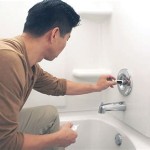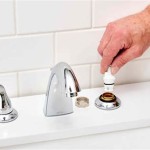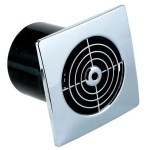Plumbing Under Bathroom Sink: A Guide to Understanding the Essentials
The plumbing under your bathroom sink is a critical part of your home's plumbing system. It carries water to your sink and carries wastewater away. Understanding the basic components and their functions can help you troubleshoot minor plumbing issues and ensure your bathroom sink continues to operate efficiently. This article will provide an in-depth guide to the plumbing under your bathroom sink, covering the essential components, their functions, and common issues.
Essential Components of Bathroom Sink Plumbing
The plumbing system under your bathroom sink consists of several interconnected parts. These components work together to deliver clean water for daily use and efficiently dispose of waste. Understanding the key components will help you identify potential issues and perform basic maintenance.
1. Supply Pipes
Supply pipes are the conduits that bring clean water to your sink. They are typically made of copper, plastic (PVC or PEX), or galvanized steel. These pipes connect to the main water supply line, which is usually located in your basement or crawlspace. The hot and cold water supply pipes are usually identifiable by color-coding. Typically, the hot water pipe is red or marked with a red stripe, while the cold water pipe is blue or marked with a blue stripe.
2. Shut-Off Valves
Shut-off valves are located on the supply pipes and allow you to control the water flow to your sink. These valves are essential for isolating the sink during repairs or maintenance. In most cases, there will be separate shut-off valves for the hot and cold water lines. These valves are typically ball valves, which have a lever handle that turns 90 degrees to open and close the valve.
3. Flexible Supply Lines
Flexible supply lines connect the shut-off valves to the faucet. These lines are typically made of braided stainless steel, rubber, or a combination of both. They offer flexibility and prevent the pipes from straining when the faucet is moved or adjusted. Flexible supply lines can be prone to leaks, especially when they are older, and should be inspected periodically for signs of wear and tear.
4. Faucet
The faucet is the main component responsible for controlling water flow to the sink. It combines the hot and cold water supply lines and delivers water to the sink through a spout. Faucets come in a variety of styles and designs, each with its own unique function. Faucets are typically made of brass, nickel, chrome, or other durable materials.
5. Drain
The drain is the pathway for wastewater to flow away from the sink. It starts with the drain hole in the sink basin, connecting to a drain pipe that runs under the sink and eventually connects to larger drain lines leading to your sewer system. The drain typically consists of a drain stopper, a P-trap, and a tailpiece.
6. P-Trap
The P-trap is a U-shaped portion of the drain pipe that holds a small amount of water. It acts as a barrier to prevent sewer gases from entering your home. This trap is crucial for maintaining a clean and healthy environment in your bathroom.
7. Tailpiece
The tailpiece connects the P-trap to the drain pipe. This portion of the drain is often made of PVC, ABS, or metal. It is a short and relatively straightforward component, but it should be inspected for any signs of leaks or corrosion.
Common Plumbing Issues Under the Bathroom Sink
While generally reliable, the plumbing under your bathroom sink can experience occasional issues. Understanding the most common problems can help you resolve them quickly and prevent further damage.
1. Leaks
Leaks are a common problem with bathroom sink plumbing. They can occur at the supply lines, faucet, or even the drain. Leaks are often caused by worn-out or damaged parts, corrosion, or loose connections. Water leaks can lead to water waste and potential damage to your bathroom and surrounding areas.
2. Clogged Drains
Clogged drains are another common issue with bathroom sink plumbing. Hair, soap scum, and other debris can build up in the drain, causing slow drainage or complete blockage. Clogged drains can cause water to back up into the sink, creating an unpleasant mess.
3. Faucet Issues
Faucet issues can include leaks, drips, difficulty turning on or off, and uneven water flow. These problems are often caused by wear and tear, mineral buildup, or damage to the faucet's internal components.
Maintenance and Troubleshooting for Bathroom Sink Plumbing
Regular maintenance can help you prevent common plumbing issues and keep your bathroom sink working smoothly.
1. Regular Inspections
Make a habit of inspecting the plumbing under your sink at least once a year. Look for signs of wear and tear, leaks, and corrosion. Tighten any loose connections and replace any worn or damaged parts.
2. Cleaning the Drain
Regularly clean your drain to prevent clogs. Use a drain cleaner or a plunger to remove hair, soap scum, and other debris. You can also use a drain snake to reach deeper into the drain pipe and remove any stubborn clogs.
3. Faucet Maintenance
Regularly clean the faucet to remove mineral buildup that can cause leaks or uneven water flow. Use a soft cloth and a mild cleaning solution to clean the faucet. You can also use a faucet wrench to tighten the faucet's handle and prevent leaks.
4. Water Shut-Off Valves
Test your shut-off valves periodically to ensure they are still functional. Turn the valves on and off to make sure they are operating smoothly. Replace any malfunctioning valves to avoid potential water damage.

Bathroom Sink Plumbing Installation Diy Montreal

How To Plumb A Bathroom With Multiple Plumbing Diagrams Hammerpedia
P Trap Installation Under Bathroom Sink Mister Plumber

How To Unclog A Bathroom Sink Hana S Happy Home

Bathroom Sink Plumbing Installation Diy Montreal

Bathroom Sink Plumbing Installation

How To Retrieve An Item Dropped Down The Sink Drain In 2024 Bathroom Plumbing Replace

Bathroom Sink Drain Leaking Around Threads Premier Plumbing Inc

Reviews For Simple Drain 1 25 In Rubber Threaded P Trap Bathroom Single Sink Kit Pg 3 The Home Depot
How To Install Bathroom Sink Drain Queen Bee Of Honey Dos
Related Posts







